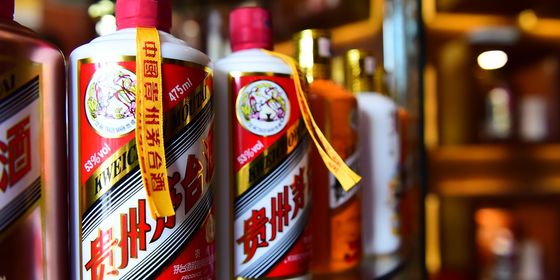The strangest and most unexpected consequences of the US-China Trade War
There’s a Trade War raging, in case you hadn’t noticed, but its effects haven’t all been predictable. Using tariffs may sound like a lose-lose way to conduct trade, but not everyone is suffering; just ask Canada’s lobster fishermen. Here, we take a look at five of the stranger outcomes of the trade dispute between the US and China, from goldfish importers in Michigan, to plastic producers in Zhejiang.
Goldfish on the hook
The headlines may focus on automobile sales and chip manufacturers, but the list of products subject to tariffs is so long that it seems to include everything—even exotic fish. Yes, on page 31 of List 3 of Chinese imports that face a 25 percent tariff when entering the US, “live ornamental freshwater fish” are listed among “frog legs, fresh, chilled or frozen” and “rock lobster and other sea crayfish” (we’ll get onto the crustaceans later).
For US pet-sellers, this has been bad news. A 25 percent price increase on a common pet store or carnival bag goldfish may seem insignificant, but for traders specializing in rare breeds, the increase has been hard to stomach—some fish sell for hundreds of dollars each in the US. “My income is literally cut in half by tariffs,” Ken Fischer, an exotic fish seller in Michigan, told NPR in October. The goldfish are carefully bred and selected to ensure their quality and beauty, with workers in China sifting through acres of ponds to select the best fish for export. The labor intensive breeding method means it’s not easy for sellers in the US to find new suppliers, and they are stuck paying thousands of dollars in tariffs to import their fish. “The numbers aren’t adding up,” Mr. Fischer added.
Fruitless endeavors
This summer, young Chinese urbanites took to the internet to lament their lack of “fruit freedom (水果自由, shuǐguǒ zìyóu)” as prices for apples, pears, grapes, and just about every other fruit rose sharply. Although bad weather was probably the prime culprit in causing the steep rise, decimating harvests in eastern China, Trade War tariffs on imports of oranges, cherries, and apples from the US exacerbated the problem.
Netizens had been talking about “cherry freedom (车厘子自由, chē lí zǐ zìyóu)” since the start of 2019, with post-90s generation professionals wondering when, or if, they would ever reach the comfortable level of wealth necessary to be able to buy imported cherries without thinking twice about the price. Before that, a video titled “The 15 Stages of Financial Freedom for Women” described the various stages of wealth for millennial females, with “cherry freedom” ranked as the sixth stage, just above “take-out freedom” and “Starbucks freedom,” but behind “clothing freedom.” By summer, the price of fruit had reached such a height that some reported taking to online discount stores, like Pinduoduo, to buy their fruit instead of visiting markets for the fresh stuff.
Some went to even greater lengths. Li Yi, from Xi’an, told China Daily that she had started visiting an orchard in the countryside to pick cherries, rather than buy them in the city—”The cost of the fruit plus the round trip is still cheaper than buying at the market,” she claimed.
Noodle renaissance
The Trade War, among other factors, may be driving a “consumption downgrade” (消费降级, xiāofèi jiàngjí) among cash-strapped Chinese. High rents, tariffs on imported goods, rising pork prices, and the removal of subsidized take-out services have all contributed to price conscious Chinese being more thrifty with their spending. This trend may also be contributing to a revival of the humble (and cheap) pot noodle, or fangbian mian (方便面).
Around 40 billion servings of pot noodles were sold in 2018, up from 38.5 billion in 2016. Tingyi Holdings, China’s largest producer of instant noodles and owner of the Master Kong brand, reported a 64 percent jump in net profits in 2018, to 712 million RMB. Sales of instant noodles had been in decline for a number of years before the recent rise. Besides instant noodles, cheap baijiu (rice wine) and pickled vegetables are also benefiting from price-conscious consumers.
Canada’s crustaceans
Goldfish are not the only aquatic animal affected by the Trade War: Lobsters too, have become embroiled in the dispute. In July 2019, China placed an extra tariff of 10 percent on live lobsters imported from the US, on top of a 25 percent tariff already imposed. The result: a sharp decline in US lobsters exported to China, but a surge in profits for Canadian businesses. Canada has exported twice as many lobsters this year than in 2018, and the Canadian lobster market is expected to surpass $3 billion by 2025, three times the figure in 2010.
Demand from middle class Chinese has driven this boom—the value of Canadian lobster exports to China increased by 33,000 percent between 1990 and 2018. Canada’s lobster catchers may be cementing their place as the suppliers of choice for China’s market. Meanwhile, US exports of live lobsters to China dropped 80 percent in the first six months of 2019.
Collateral waste
In January, 2018, Chinese authorities introduced regulations that effectively stopped imports of garbage from abroad. Before that, Chinese recycling companies took 70 percent of the world’s plastic waste (about 7 million tons a year), turning it into raw materials for use in construction at home. The new rules, coming at around the same time that the US began firing the first shots of the Trade War by imposing tariffs on some Chinese products, have had a big impact on American waste disposal. Before the new regulations, China imported around 40 percent of US paper, plastics, and other recyclables—in 2018, US exports of waste plastic to China fell 92 percent.
The new standards gutted the Chinese recycling import industry almost overnight. Recycling companies quickly relocated to southeast Asia, and exports of trash from the US to Thailand rose nearly 7,000 percent in just one year. But now many of those countries have restricted trash imports as well, leaving the US and other countries with a massive recycling problem. Some US cities, with nowhere to send recyclable material, have started sending it to landfill or burning it.
But it’s not all bad news for businesses in the plastic industry. Domestic recycling in China went into overdrive this year, with Shanghai among the first cities to introduce strict garbage sorting rules. This recycling drive, far from damaging the prospects of China’s plastic producing companies, has led to a boom in orders for plastic color coded recycling bins. Perhaps Chinese companies formerly importing used plastic from the US can now move into trash-can production to keep business afloat.
Cover image from VCG












